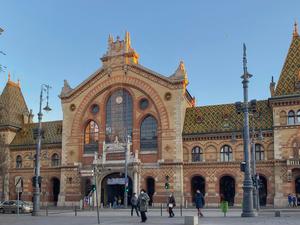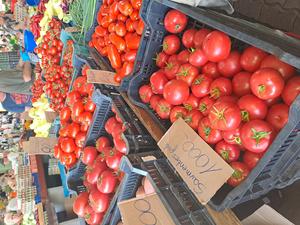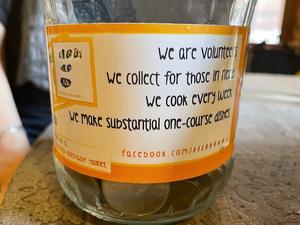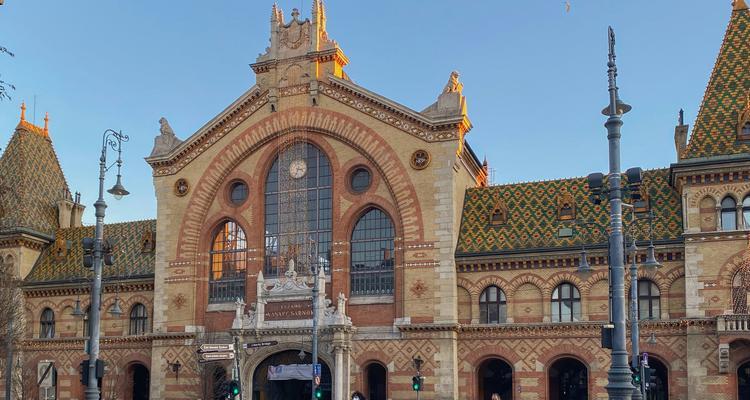Great encounters and inspiring stories - on a walk with Budapest's inhabitants
There is nothing more exciting than meeting new people, hearing their stories, and being inspired. Over the past year and a half, the FoodCLIC project has allowed experts from the Environmental Social Science Research Group (ESSRG) to explore the City of Budapest from the perspective of its inhabitants navigating the city’s food systems. In the framework of the FoodCLIC project and beyond, ESSRG had the chance to come into contact with people from different sectors and with different areas of expertise, who are all working to make our food system healthier, more environmentally sustainable, and socially just.
Laura Umbrai and the historical overview of Budapest’s food system
Laura Umbrai holds a Ph.D. in social history and is a professional historian. She investigates many aspects of urban metabolism, with an emphasis on Budapest's past, including the areas of garbage collection, housing, and public food service.
If Laura could take us all for a walk in one of the city’s parks, she would tell us the following.
Since the end of the Austro-Hungarian monarchy (1918), the increase in the population through migration caused a shortage of housing. This is why, towards the end of the nineteenth century, the city's food supply became increasingly scarce and expensive. The wealthy did not buy their food in the countryside, but preferred to travel to Vienna for higher quality goods. Unfortunately, the municipality's vision for a state-of-the-art market system that would have included processing, wholesale, and distribution on a national scale never materialised. Additionally, plans for the city to become an international centre for the trade of animals were halted at that time due to animal diseases. Faced with these challenges, the capital's leadership felt compelled to take an active role in shaping the city’s food systems through local food policy.
Market halls, slaughterhouses and animal fairs at the district level form(ed) the backbone of this food distribution system. A horse meat plant was established by the municipality in 1905. In 1908, a bread factory was established, which could produce up to 25,000 kg of bread a day. The Közért (meaning "for the public" - a term that only locals in Budapest would recognise) was the name of a municipal grocery store that opened in 1911 and continued operations until 1948. During the interwar period, soup kitchens were established and temporarily gained some popularity. Public school lunches and other forms of public catering for children were introduced in Budapest by religious and charitable groups.
Overall, Budapest is continuously exploring new avenues to improve the sustainability of its housing and food supply systems. The lessons learned from Budapest's previous food policies are a great resource for the city to inspire a future-proofed food strategy.

One of the best known buildings of Budapest, the Great Market Hall was built due to the food policy reforms at the end of the 19th century. Photo by Linda Gerbec on Unsplash.
Margit, the favourite customer
Margit is retired and has lived in one of Budapest’s panel houses for a long time. In her personal food environment, she buys her food exclusively at one specific market in a suburban district of Budapest. She insists on buying everything here. The neighbourhood has easy access to big supermarket chains., However, Margit prefers to buy her food directly from the farmer, from the baker, from the producer. She wants to know the people who grew the carrot and the tomato.
The vendors at the market know their customer and are happy to do her some favors: one farmer cuts off the thin end of the parsley root before he weighs it, so that Margit only buys, what she can actually use. The “chicken lady” has placed a carton of eggs under the counter,- reserved for her customer Margit. Before Margit makes her way home, she has a quick chat with the sausage and meat seller about the quality of today's cold cuts.
What Margit doesn't buy at the market, she finds in her allotment in a nearby community garden, which she visits every day.

Photo taken by Margit at the big market of the 19th district of Budapest
The first social farm in Budapest
It is a chilly December morning, when the FoodCLIC team arrives at the Budapest Bike Maffia Farm through a rampant dirt road covered in ice. Betti Balassa, the leader of a new social garden, is waiting at the entrance, hidden in the woods. Betty usually starts working before the sun is up and finishes long after it sets, as her main job is taking care of the newly-founded garden – and the to-do list appears to be never-ending. However, luckily there are multiple factors that keep her going. Even though being a farm supervisor is a demanding job, it is also rewarding, with the garden thanking her for all her hard work and attentive care with luscious vegetables, legumes, herbs and fruits. But the most important crop that the garden produces is something else: it is the social impact.
Budapest Bike Maffia, being a civil society organization, established this so-called “social oasis” as a way to transform the food environment of people in need and to provide families, students, social workers, volunteers and company employees with a therapeutic garden, where everyone can gather, meet for a barbecue, relax or even develop their skills through training courses.
Keeping this in mind, as Betti told us, the garden offers not only delicious harvest and a space for recreation, but also job and engagement opportunities for homeless or unemployed people, volunteers and families to meet and create value together. Showing us around the field, going past various vines, vegetable beds and even young kiwi and fig trees, Betti tells us about the destiny of the crops: their main aim is to provide vegetables, legumes and fruits for maternity homes, homeless shelters and nurseries as well as for use in their café and bar unit in which they donate their profits to NGOs.
Eating with dignity
It is often the volunteers and initiatives that get involved to make a neighbourhood food system more inclusive. In Budapest, for example, there is a grassroots initiative whose members can be found in a pub-restaurant where they serve a hot meal every Sunday to people in need from the neighbourhood and beyond. Together with several cooks, helpers, coordinators, and volunteers, the members of this initiative have been active for years.
The initiative started in 2013 when the restaurant's employees came up with the idea to help the homeless with the money they collected from the restaurant's little jar. At the beginning, around 50 to 60 hot meals were served. Now, every Sunday, the association distributes hundreds of hot and, if possible, cold meals to the needy. The organisation operates in two districts in Budapest and three other locations in rural areas, distributing more than 3,000 meals per month. The concept is unique in that it is not isolated on the outskirts or in a hidden corner of the city, but takes place in the centre of the city, with the aim of ensuring that people who are disadvantaged and would otherwise not have access to can enjoy a meal in a restaurant at least once a week.
It is not easy to manage such an initiative and keep it going week after week. It takes a lot of cooperation and hard work, from the restaurants or suppliers to the coordinators and those who help distribute the food on Sundays. So, what keeps the members of the initiative motivated? It’s the smiles and gratitude they see on people's faces when coming into the restaurant.

Photo by ESSRG
Ádám, the baker
Ádám built his own artisan bakery and supply chain by transforming a part of the food system. He now collaborates directly with other farmers and millers. Watch the video to learn about his story:
The Farmer Miller Baker network in Budapest City Region
- Written by our guest authors and consortium members Bálint Balázs, Éva Bánsági, Vanda Pózner, Kata Varsányi (ESSRG, Environmental Social Science Research Group, essrg.hu)
Publishing date:
FOODCLIC. We are connecting people, food, policy & places.
FoodCLIC is a four-year project funded by the EU. The project runs from September 2022 to February 2027. The acronym FoodCLIC stands for 'integrated urban FOOD policies – developing sustainability Co-benefits, spatial Linkages, social Inclusion and sectoral Connections to transform food systems in city-regions


